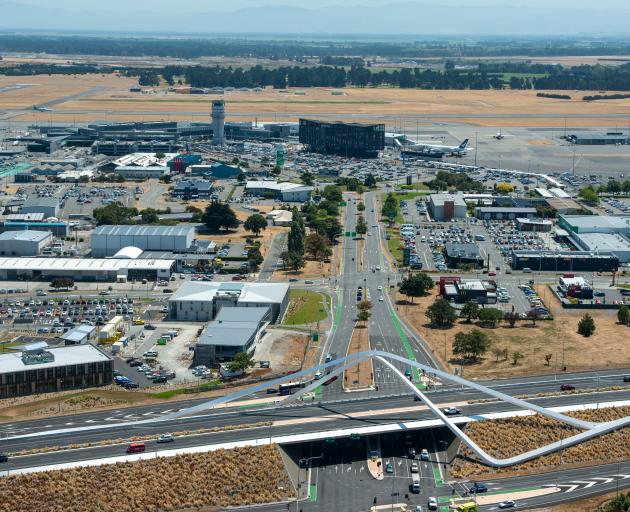You are not permitted to download, save or email this image. Visit image gallery to purchase the image.

Christchurch Airport is making a green transition, writes Piers Locke.
The authors of the recently released IPCC report on mitigating climate change have declared this a now-or-never moment to halve greenhouse gas emissions by 2030. They are clear this will be necessary to avert climate catastrophe. Can our businesses rise to this urgent challenge?
Christchurch Airport is one that is mobilising for it. Last year they contracted me, an independent social scientist with expertise on the global ecological crisis, to critically assess their ongoing efforts to make a green transition. Given full access to staff, operations and documentation, I discovered a company that appreciates our situation of ecological overshoot and the necessity to drastically reduce emissions. I found its efforts to transform itself and its operations, and to exert its influence for decarbonisation, to be substantial.
Readers may be understandably sceptical. However, the airport has implemented a panoply of innovations that can give us some hope in these desperate times. Between 2015 and 2020, the airport more than halved its scope 1 and 2 greenhouse gas emissions, becoming the first airport in the world to achieve level 4 in the Airport Carbon Accreditation scheme. With this achievement came requests to mentor other airports around the world.
These reductions were accomplished by multiple means, but two are especially notable. Firstly, it upgraded its energy system, almost entirely eliminating its use of diesel generators by installing ground source heat pumps. Secondly, it installed electric systems for plugging in planes that would otherwise burn jet fuel while prepping for flight at the gate.
The airport is taking further steps forward. Originally aiming for carbon neutrality by 2030, it is now offsetting its remaining scope 1, 2, and controllable scope 3 emissions to go 25% climate positive. More significant, though, is Kowhai Park, a plan to build New Zealand’s largest solar array, to be complemented by green hydrogen production for future aviation.
This will not generate electricity not only for the airport and the grid, but also for powering the electric and hydrogen aircraft the airport is preparing for. This is crucial for addressing scope 3 emissions; those resulting from the service chain. Flight emissions currently represent 94.3% of the airport’s scope 3 emissions, so the imperative to invest, support, and lobby for zero-emissions aircraft is obvious. Here too, the airport has been proactive, lobbying for a national body to oversee transition to low-emissions aviation, and committing to build the infrastructure to charge electric planes, the first of which are due to operate commercially in New Zealand from 2026.
Transition is about more than converting technological infrastructure though. It is a whole-of-society enterprise that must also involve social and behavioural change. Business as usual is no longer tenable. The airport recognises this and seeks to play its part. In pursuit of this, it has established a framework for assessing and implementing new initiatives, and reformed its governance processes, integrating strict social and environmental criteria into all decision-making. It is also exploring how best to prioritise the meeting of social needs within planetary boundaries.
This commitment to environmental responsibility, decarbonising aviation and just transition also informs the project exploring the prospects for a new airport in Central Otago. This can only be pursued if emissions from construction and operations prove feasible within the low-carbon infrastructure emissions targets set by New Zealand’s regulatory bodies.
We all face the challenge of rapidly remaking society for ecological viability, and Christchurch Airport is one of too few organisations beginning to embrace it. The transition agenda is only just developing, and will need much greater dialogue, collaboration and action.
– Piers Locke is an independent sustainability specialist and researcher.

© Copyright Star Media Network 2019. All rights reserved.